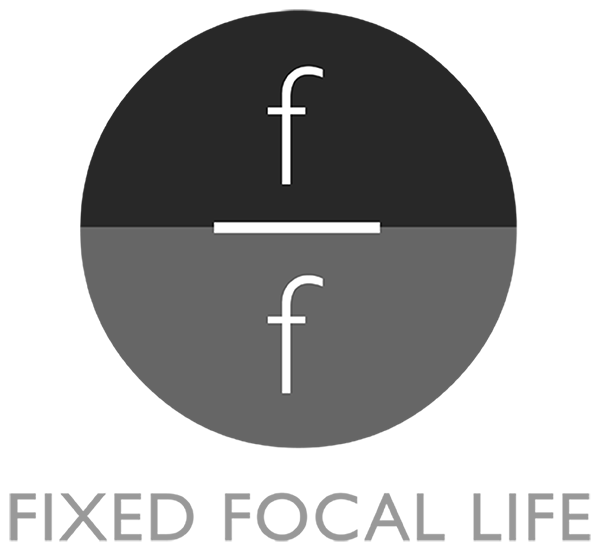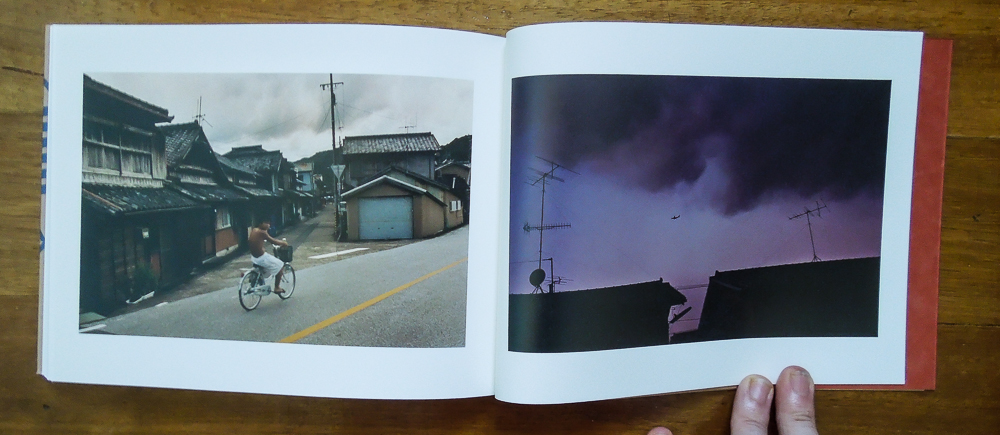Koji Onaka - Lucky Cat
This is going to be a really interesting and quirky kind of review if it does any justice to how quirky and interesting Koji Onaka's wonderful little book Luck Cat is. The basics are that its a simple soft cover book. The paper quality is really nice, and the vibrant colour and contrasty nature of the prints is well done also. I do prefer hard cover books, they seem to add a touch of class to a book, but the soft covering on this edition of Lucky Cat is actually quite well done. The simple utilitarian design on the front cover of the book really matches the nature of the images within.
Once again thanks to the guys at Japan Exposures and the clear fact that they have contact with a lot of the artists whos books they sell, I have been able to acquire a copy signed by the artist. Nice little touch anytime this is the case as I have said in the past.
I am going to try and write this review in a few sittings and hope that this will sort of allow me to translate the process that one gets to experience when they slowly start to take in a new book. A photo book is both very different and very similar to a novel in a number of ways. Different in the obvious point that it doesnt use words to tell its story. Similar in the fact that I think the measure of a good one is so often not only about the single images in the pages. Much like the sentences in a novel, its about how the combination and structure of the small pieces work with one another to tell the story that artist is trying to convey to the viewer.
The quality of the story, much like a novel, will be a matter of ones subjective tastes... Even what I would consider to be my favourite photo book, or even my favourite image, is not something that the eye of another viewer may find even slightly intriguing. I get the impression with Lucky Cat on the first quick viewing that it does have a story to tell me, and its a story that I think I will end up having a connection with as well.
The workflow of Koji is apparent in the pages and seems a little haphazard on the first viewing of the book. I do think this is something likely to change as I have more time with the book and will report on how this feeling has progressed and developed upon further interaction with the book. Right now though, it is evident to me that Koji has a strong ability to take what he sees everyday and make images that others find interesting. This is of course a great talent to possess.
The book actually starts with a series of images where Koji is present in the images. Just a shadow, but clearly the shadow of the artist. I get the impression with the book starting in this manner that Koji is almost using this first section as a form of an introduction. Just a casual wave hello from the artist before we get stuck into the rest of the images.
His presence in the images is telling to the rest of the book as well, as when I first flipped though the pages the sense for me was a strong indication that I was simply joining Koji for a walk. Just spending a day with him, do whatever it was that he had planned for the day. everything, from eating meals to catching the train. Evidently at some point in time we needed to stop for a bathroom break.
An interesting observation that is evident when taking in the book is the lack of human subject matter in a lot of the images. This is in no way a problem for myself, I really like this kind of work. What is really well maintained through the pages however is an always strong sense of presence of human influence in the images. Even though there are not actually people in many of the shots, that feeling of the fact that a human influenced something within the scene is always there.
As one starts to go back to the book for subsequent viewings little snippets of the sequence start to reveal themselves. Those sneaky little placements of images within the pages that work well together. In Lucky Cat these instances are sometimes very subtle. Sometimes not being placed on the same page as one another, but a couple of pages apart. This is very purposeful and really works well for this book.
Its a very multi-layered book. There seems to me to be a few ways youre able to read it. My initial reading was after work one evening when the book came in the mail and was very fast. This left me with some really strong ideas about what the book contained. These ideas however were a little misguided when time was spent taking in the book in a slower manner.
That haphazard nature of the images that was the initial impression slowly drifted into a distant memory as I started to connect with the images in the pages.What really stood out to me was the different images that presented themselves as the alpha images in the pages when viewed as a set at different speeds.
I think that any photo book will have a set of images, or a few single images that always stand out amongst the others in the book. Again I am certain that these images will be different from one reader to the next. I do think that the placement of the alpha images in the books allows for a very different flow to the story unfolding. Too many alpha images in a row and your senses start to get a little overwhelmed. Too few and you start to get a little bored. What I feel Koji has been able to do with the book is present these strong images in a manner that acts as a conduit for the rest of the book.
They sit well with the rest of the images and dont distract from one another. They add a little surprise to the eyes and wake the soul just a little as they present on the pages. At times these images are set on a double page by themselves with the adjoining page being blank. This method further adds to the change in tempo that they present when they appear in the sequence.
As you read the book more and more (I have been through it 4 or 5 times slowly now) the feeling of everyday existence becomes more and more evident. Koji has managed to set a scene that is so normal that its interesting.I scene that could be from anyones extended day, but is plainly one of his own doing.
With time I have started to connect to the happenings of the book. The connection is almost such that you feel like you are with Koji as the images have an intimate and natural sense to them. So much so that I have even started to leap to some conclusions about what he may be doing at one point or another in the book.
There are times in the book where this is quite clear. The images above are an example of this. Youre presented with these two images above, and then following on from these are a series across four or five pages that end in an image of a darkened room with a bed. Its these simple but telling sequences that leave the viewer with that feeling of normality. The feeling that this is just another day.
There are times when we see shoes in a doorway. Others were we are presented with stairs leading to somewhere that is unknown. These are the sections where we are left to fill in the blanks. Are we coming home, visiting a friend. The ability to leave the reader with these questions and a sense they need to be answered make the book kind of like a chose your own adventure.
The transitory nature of the book, and the different paths that you are able to use to navigate it are one of the defining features for me, but there is another. There is Kojis natural ability to make images of things that draw his attention. There are times when you are presented with images that you just wouldnt really consider making. The fact that Koji has made the image and then managed to sequence them in such a special little book is a great achievement.
I think that I have managed to take in the book to an extent that has allowed me to gain some insight into what Koji was trying to show readers of his wonderful little book. I almost feel as if I have sat and enjoyed a casual meal with Koji himself. Its that type of book that leaves the reader with no doubt that what youre feeling is the presence of the artist in the pages. It has been a fun and fulfilling little journey.
The book finishes with the only image of a person. The only shot in the whole book that has a person in the image is this last one. As I said earlier, there are a set at the start of the book where Koji is present in the form of a shadow. Through the book the reader is left to almost fill in the blacks as far as the rest of the people that Koji would have interacted with throughout the day. This is however part of the intrigue. It just adds to the mystery of the read.
What it also does is build a little suspense. This all comes to a head when you are presented with the final set of images where one is of a man riding his bike. The immediate feeling for me was one of intrusion. What is he doing here and what does he want? Who is he? Why was he so important that he was the one person that managed to prove important enough to become a final and lasting part of the journey we have undertaken?
I feel these are not questions that I will get an answer to. Maybe another read and the choice of a different path will reveal the secret...
I find the style of the images in the book inspiring. Its a style that I would aspire to be able to achieve myself someday. I am super happy to have this little book as a point of reference to what I think is an interesting eye through which to view the world.
Japan Exposures still have signed copies of Lucky Cat available. I think that it would be a welcome addition to any photo book collection, and I for one am super happy that its a book that has a home on my shelf.












